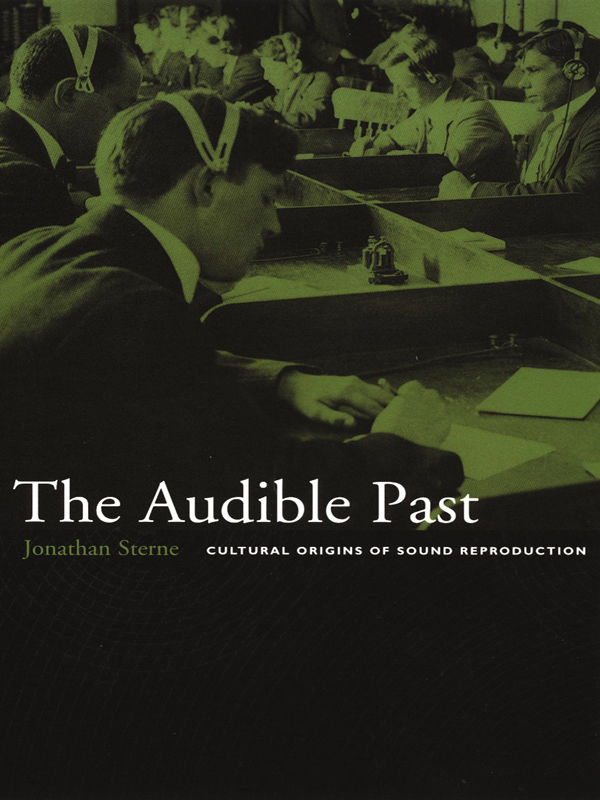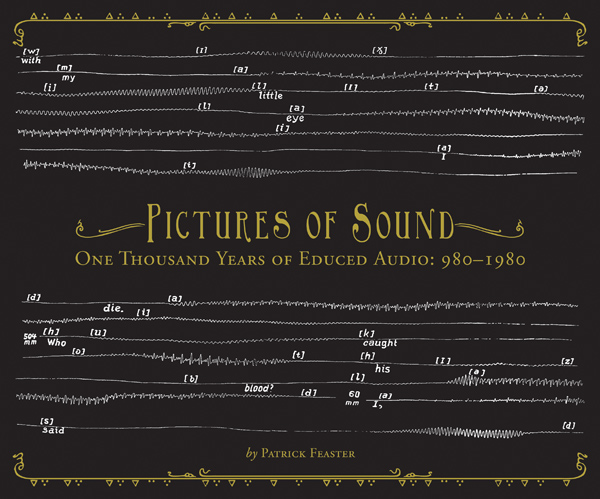Trevor Pinch, Karin Bijsterveld (eds.): The Oxford Handbook of Sound Studies (2011)
Filed under book | Tags: · acoustics, computing, data visualisation, electronic music, field recording, game studies, hip hop, listening, medicine, music, noise, perception, phonograph, radio, science, sonification, sound, sound design, sound recording, sound studies, vision

“Written by the leading scholars and researchers in the emerging field of sound studies, The Oxford Handbook of Sound Studies offers new and fully engaging perspectives on the significance of sound in its material and cultural forms. The book considers sounds and music as experienced in such diverse settings as shop floors, laboratories, clinics, design studios, homes, and clubs, across an impressively broad range of historical periods and national and cultural contexts.
Science has traditionally been understood as a visual matter, a study which has historically been undertaken with optical technologies such as slides, graphs, and telescopes. This book questions that notion powerfully by showing how listening has contributed to scientific practice. Sounds have always been a part of human experience, shaping and transforming the world in which we live in ways that often go unnoticed. Sounds and music, the authors argue, are embedded in the fabric of everyday life, art, commerce, and politics in ways which impact our perception of the world. Through an extraordinarily diverse set of case studies, authors illustrate how sounds — from the sounds of industrialization, to the sounds of automobiles, to sounds in underwater music and hip-hop, to the sounds of nanotechnology — give rise to new forms listening practices. In addition, the book discusses the rise of new public problems such as noise pollution, hearing loss, and the “end” of the amateur musician that stem from the spread and appropriation of new sound- and music-related technologies, analog and digital, in many domains of life.”
Publisher Oxford University Press, 2011
ISBN 0199995818, 9780195388947
624 pages
Reviews: John F. Barber (Leonardo, 2012), Bruce Johnson (Popular Music, 2013), William Cheng (Journal of the American Musicological Society, 2014).
Comment (0)Jonathan Sterne: The Audible Past: Cultural Origins of Sound Reproduction (2003)
Filed under book | Tags: · history of technology, listening, media technology, music, music history, phonograph, radio, sound, sound recording, technology, telegraphy, telephone

“The Audible Past explores the cultural origins of sound reproduction. It describes a distinctive sound culture that gave birth to the sound recording and the transmission devices so ubiquitous in modern life. With an ear for the unexpected, scholar and musician Jonathan Sterne uses the technological and cultural precursors of telephony, phonography, and radio as an entry point into a history of sound in its own right. Sterne studies the constantly shifting boundary between phenomena organized as “sound” and “not sound.” In The Audible Past, this history crisscrosses the liminal regions between bodies and machines, originals and copies, nature and culture, and life and death.
Blending cultural studies and the history of communication technology, Sterne follows modern sound technologies back through a historical labyrinth. Along the way, he encounters capitalists and inventors, musicians and philosophers, embalmers and grave robbers, doctors and patients, deaf children and their teachers, professionals and hobbyists, folklorists and tribal singers. The Audible Past tracks the connections between the history of sound and the defining features of modernity: from developments in medicine, physics, and philosophy to the tumultuous shifts of industrial capitalism, colonialism, urbanization, modern technology, and the rise of a new middle class.
A provocative history of sound, The Audible Past challenges theoretical commonplaces such as the philosophical privilege of the speaking subject, the visual bias in theories of modernity, and static descriptions of nature. It will interest those in cultural studies, media and communication studies, the new musicology, and the history of technology.”
Publisher Duke University Press, 2003
ISBN 082233013X, 9780822330134
450 pages
via nutzenberg
Reviews: James P. Kraft (American Historical Review), Karin Bijsterveld (Technology and Culture).
PDF (updated on 2022-12-7)
Comment (0)Patrick Feaster: Pictures of Sound: One Thousand Years of Educed Audio, 980-1980 + CD (2012)
Filed under book, sound recording | Tags: · history of technology, media archeology, phonograph, sound, sound recording, technology

“Using modern technology, Patrick Feaster is on a mission to resurrect long-vanished voices and sounds—many of which were never intended to be revived.
Over the past thousand years, countless images have been created to depict sound in forms that theoretically could be “played” just as though they were modern sound recordings. Now, for the first time in history, this compilation uses innovative digital techniques to convert historic “pictures of sound” dating back as far as the Middle Ages directly into meaningful audio. It contains the world’s oldest known “sound recordings” in the sense of sound vibrations automatically recorded out of the air—the groundbreaking phonautograms recorded in Paris by Édouard-Léon Scott de Martinville in the 1850s and 1860s—as well as the oldest gramophone records available anywhere for listening today, including inventor Emile Berliner’s recitation of Der Handschuh, played back from an illustration in a magazine, which international news media recently proclaimed to be the oldest audible “record” in the tradition of 78s and vintage vinyl. Other highlights include the oldest known recording of identifiable words spoken in the English language (1878) and the world’s oldest surviving “trick recording” (1889). But Pictures of Sound pursues the thread even further into the past than that by “playing” everything from medieval music manuscripts to historic telegrams, and from seventeenth-century barrel organ programs to eighteenth-century “notations” of Shakespearean recitation.
In short, this isn’t just another collection of historical audio—it redefines what “historical audio” is.”
Publisher Dust-to-Digital, Atlanta/GA, 2012
144 pages, with 164 images
via prohairesis
Review: Randall Roberts (LA Times).
FirstSounds.org initiative
Patrick Feaster discusses Pictures of Sound (video, 36 min)
Author
Publisher
PDF, PDF (29 MB, updated on 2018-3-29)
ZIP (CD, 92 MB, ZIP’d OGG, updated on 2016-12-23)

